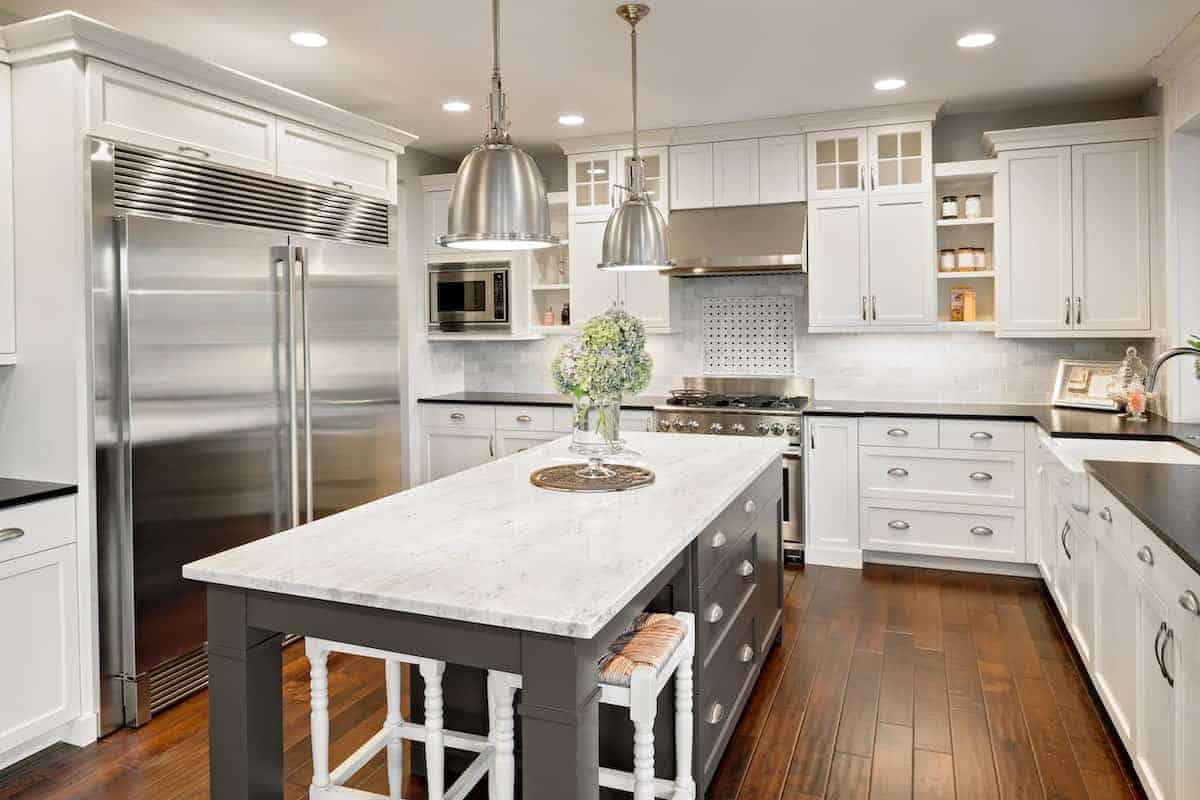The size of a full kitchen typically ranges from 70 to 100 square feet, including countertops, appliances, and cabinet space. A well-designed kitchen utilizes the available space efficiently, ensuring optimal functionality and ease of movement.
Whether you have a smaller footprint or a larger area to work with, designing the layout of your kitchen is crucial for maximizing efficiency and productivity. By carefully considering the placement of appliances, countertops, and storage, you can create a space that meets your needs and enhances the overall aesthetic of your home.
While the size of a full kitchen may vary, it’s important to prioritize functionality, storage, and ease of use to make the most of your culinary experience.

Credit: www.subzero-wolf.com
Determining The Ideal Size For A Full Kitchen
Determining the ideal size for a full kitchen requires considering various factors. Firstly, there are standard dimensions to guide you. However, customized kitchen sizes based on individual needs are also common. The size of a full kitchen is not just about the physical space, but also the functional requirements.
It should accommodate appliances, cabinets, countertops, and allow for comfortable movement. Take into account the number of people who will use the kitchen regularly, as well as any special needs they may have. Additionally, think about the cooking habits and frequency of cooking, as this will affect the amount of storage space needed.
Ultimately, the size of a full kitchen should be tailored to meet the specific needs and preferences of the homeowner.
Understanding Kitchen Layouts For Optimal Space Utilization
Understanding kitchen layouts is essential for optimizing space utilization in a full-sized kitchen. Efficient kitchen layouts play a significant role in creating a functional and organized cooking space. By considering the importance of efficient kitchen layouts, you can make the most of the available space.
Popular kitchen layouts for full-sized kitchens include the u-shape, l-shape, and galley layouts, each offering unique advantages in terms of workflow and accessibility. Additionally, compact kitchens require careful planning to maximize space utilization. By incorporating smart storage solutions, utilizing vertical space, and choosing space-saving appliances, even small kitchens can be highly efficient.
By understanding kitchen layouts and implementing space-saving strategies, you can create a kitchen that meets your needs and provides optimal functionality without compromising on style or comfort.
Functional Zones: Allocating Space In A Full Kitchen
Allocating space in a full kitchen involves different functional zones and optimizing each zone. The size of a full kitchen varies, depending on individual preferences. The various functional zones in a kitchen include the cooking zone, preparation zone, cleaning zone, and storage zone.
Each zone requires specific space allocation to ensure functionality. For example, the cooking zone needs enough space for a stove, oven, and countertop for food preparation. The preparation zone should have ample space for cutting, chopping, and mixing ingredients. The cleaning zone requires space for the sink, dishwasher, and trash bins.
Lastly, the storage zone needs enough cabinets and shelves to store utensils, cookware, and food items. To optimize space, consider using multi-functional furniture, organizing storage effectively, and installing wall-mounted appliances. Follow these tips to efficiently allocate and maximize space in each functional zone of your full kitchen.
Frequently Asked Questions Of What Is The Size Of A Full Kitchen?
How Much Space Is Needed For A Full Kitchen?
A full kitchen typically requires a space of around 70 to 100 square feet. This allows for essential appliances, cabinetry, and countertop space. However, the exact size can vary depending on individual needs and preferences.
What Are The Standard Dimensions For A Full Kitchen?
The standard dimensions for a full kitchen usually involve a width of 10 to 16 feet and a length of 12 to 20 feet. These dimensions accommodate the necessary components like countertops, appliances, sinks, and cabinets, while also allowing for comfortable movement within the space.
What Factors Should I Consider To Determine The Kitchen Size?
Several factors should be considered when determining the kitchen size. These include the number of people who will be using the kitchen, the cooking habits of the household, storage requirements, and the availability of space. Assessing these variables will help you create a kitchen size that suits your specific needs.
Conclusion
In crafting the perfect kitchen, understanding the size requirements is crucial. By examining the various dimensions and layouts discussed throughout this blog post, you can gain valuable insights into what constitutes a full-sized kitchen. Remember that the measurements provided are general guidelines and can be adjusted based on personal preferences, needs, and available space.
The size of a full kitchen typically ranges between 120 to 350 square feet, providing ample room for cooking, storage, and socializing. The layout options, such as galley, l-shaped, or island kitchens, offer flexibility and customization to suit individual lifestyles.
Additionally, considering factors like the work triangle, storage solutions, and countertop space will contribute to creating a functional and efficient cooking space. By optimizing your kitchen layout and size, you can achieve a space that suits your needs and enhances your culinary adventures.
Start planning your dream kitchen now and enjoy the benefits of a well-designed and spacious cooking area.

Leave a Reply